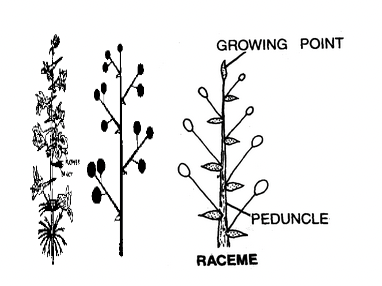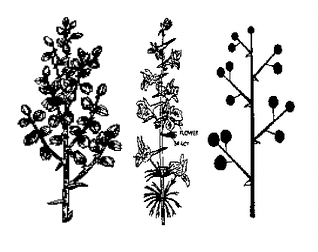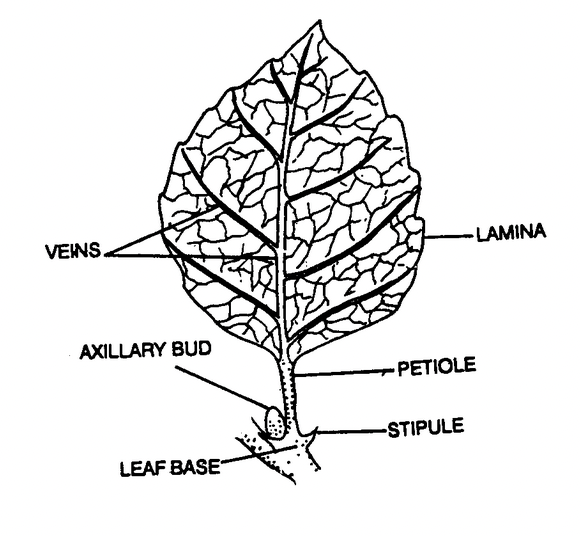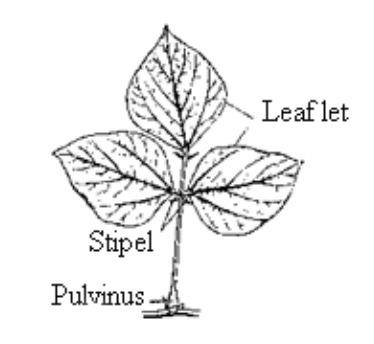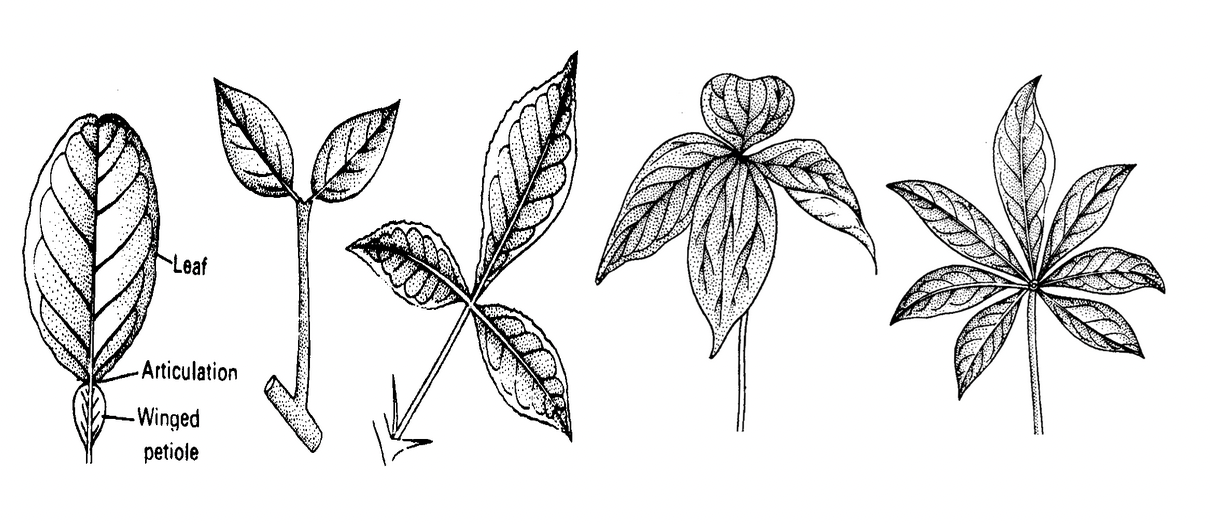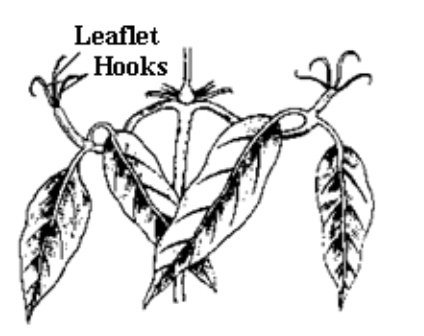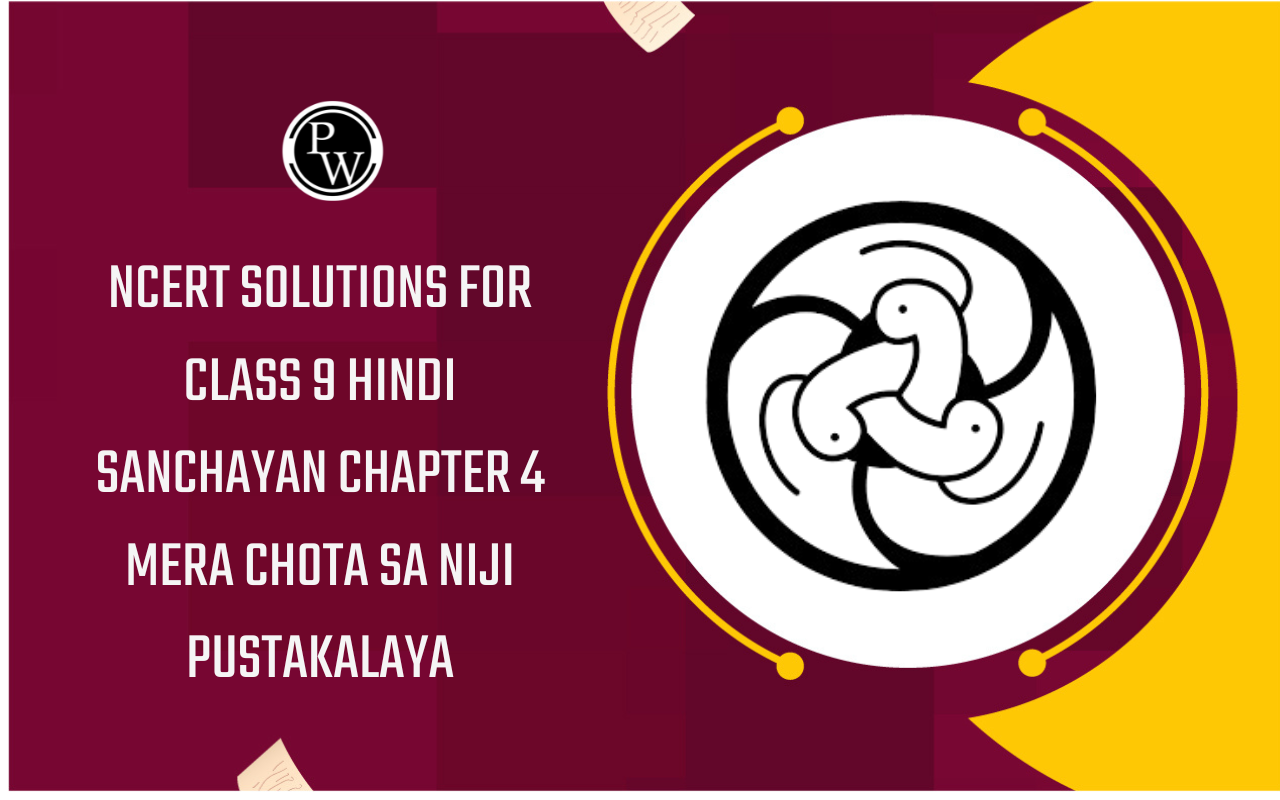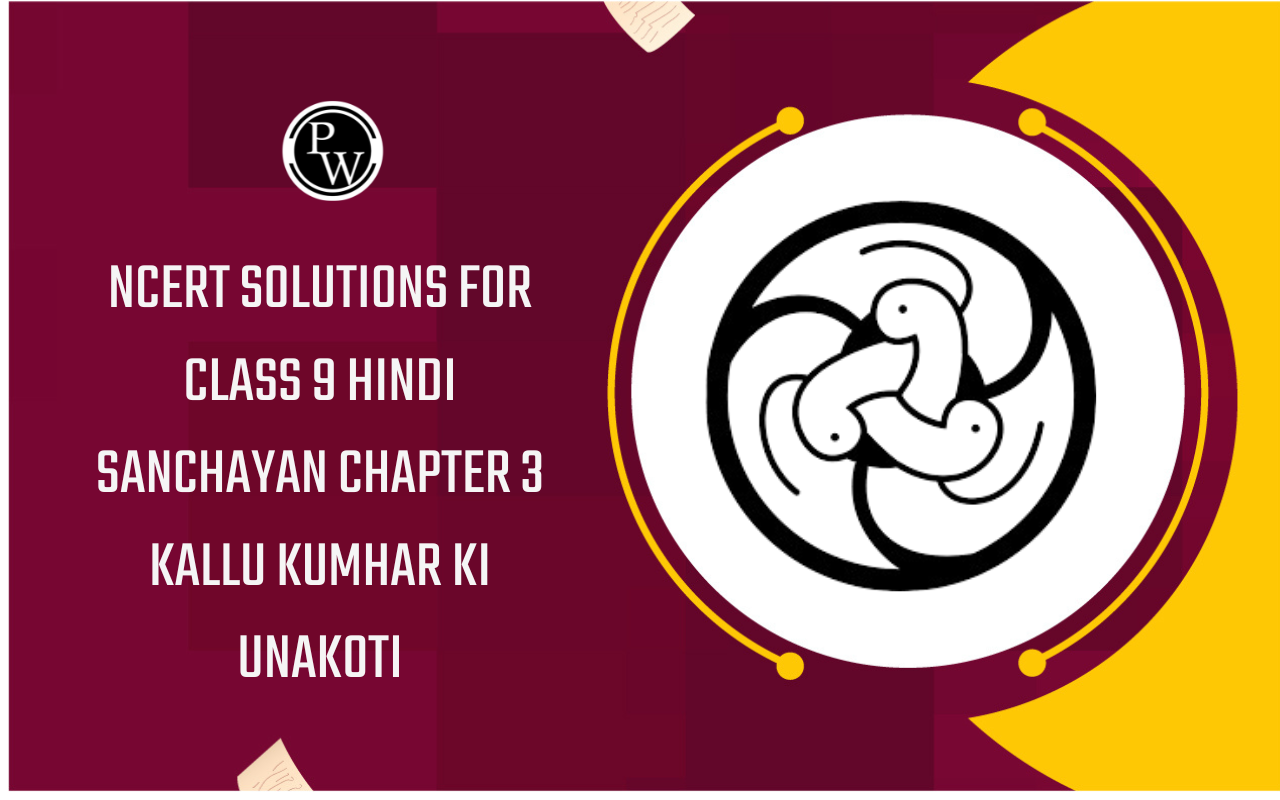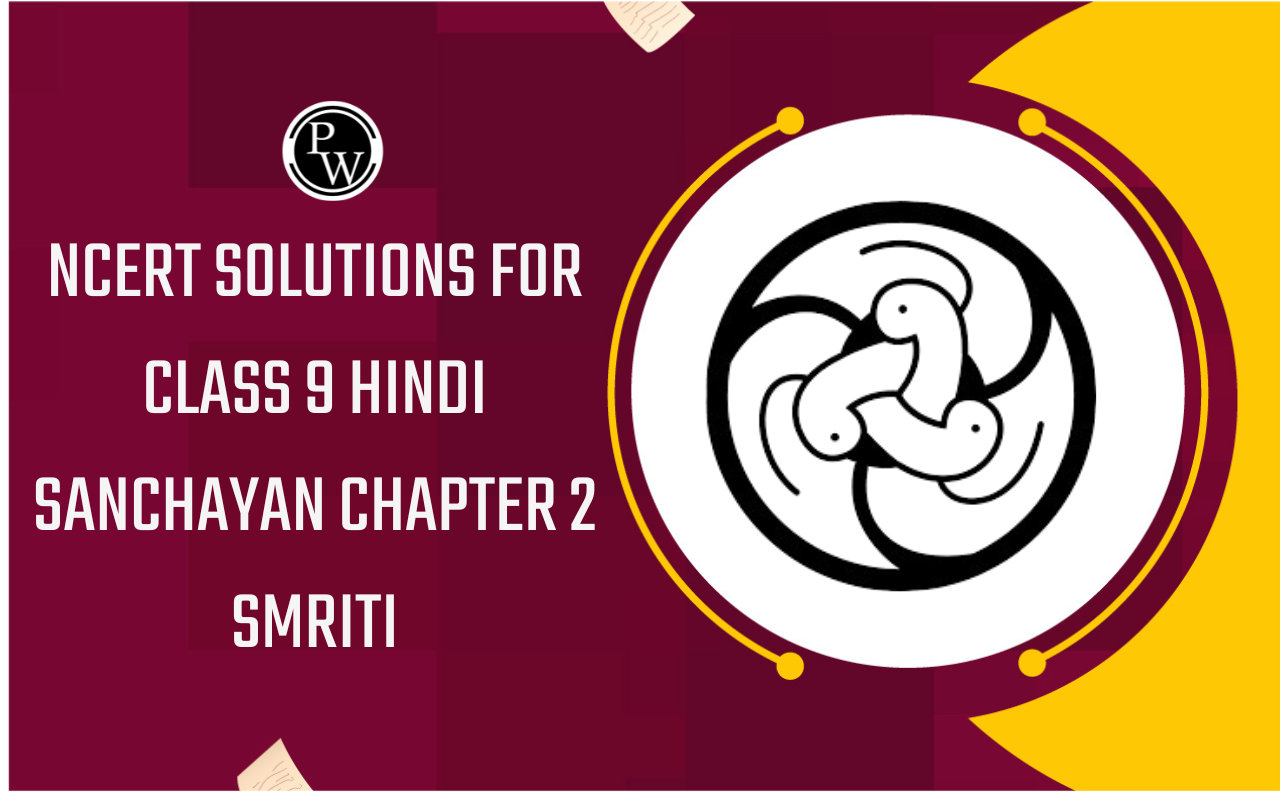
Phyllotaxy
Morphology Of Angiosperm of Class 11
The mode of arrangement of leaves on stem and its branches is called phyllotaxy or Phyllotaxis. The object of phyllotaxy is to avoid shading one another and to provide sufficient light to the leaves. There are three principal types of phyllotaxy.
- Alternate or spiral: A single leaf arises at each node in alternate manner, e.g., mango, China rose, mustard, tobacco, sunflower, etc.
- The simplest type of such a phyllotaxy is alternate or spiral distichous in which the leaves of a branch form two alternate rows (e.g., Grass). In others leaves form 3, 4, 5 or several rows called orthostichies. The condition is called tristichous, tetrastichous, pentastichous, etc. In such cases phyllotaxy is determined by passing a thread along the bases of successively higher leaves till a leaf comes to lie exactly above the first one (which is counted zero). The spiral made by the thread is called genetic spiral. Phyllotaxy is written by taking the number of circles as numerator and the number of leaves denominator, e.g., 1/3, 2/5, 3/8, 5/13, 8/21. These phyllotaxic series are also called Schimper-Brown series in which each member of the series is the sum total of numerators and denominators of the two previous ones. Angle between two successive leaves or angular divergence is calculated by multiplying the phyllotaxy with 360, e.g., 1/3 × 360 = 120.
- Opposite: Two leaves arise at each node in opposite directions. It is of two types:
-
Decussate:
Pairs of leaves at nodes are at right angle, e.g., Ixora, Ocimum, Calotropis, etc.
-
Superposed:
Pairs of leaves at nodes are parallel, e.g., Eugenia, Syzygium, Quisqualis, etc.
- Whorled: More than two leaves at each node are arranged in a circle or whorl, e.g., devil tree (Alstonia) oleander (Nerium), moyna (Vangueria), etc.

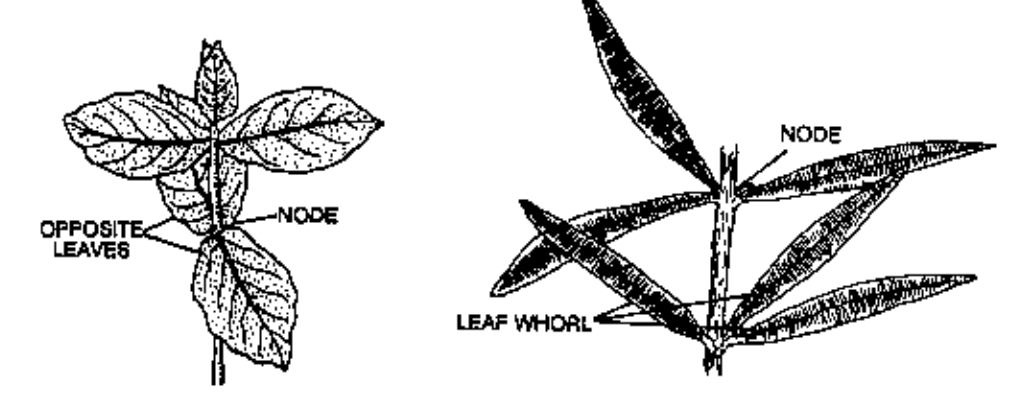
Opposite decussate in CalotropisLeaf whorls in Oleander
Fig. Types of phyllotaxy
HETEROPHYLLY
- The occurrence of more than one type of leaves on the same plant is called heterophylly. It is found in many aquatic plants like Trapa, Ranunculus aquatilis, Limnophila heterophylla. It is also noticed in some land plants like coriander, Artocarpus, Ficus, etc.
ANISOPHYLLY
- The occurrence of dissimilar leaves on a node is called anisophylly, e.g., Boerhaavia diffusa, Goldfussia glomerata, etc.,
FUNCTIONS OF LEAVES
Normal functions
- Manufacture of food, so it is called as the kitchen of the plant.
- Interchange of gases.
- Transpiration.
Subsidiary functions
- Storage of water and food, e.g., Aloe, Portulaca, onion, lilies, etc.
- Vegetative propagation, e.g., Bryophyllum, Begonia, Kalanchoe, Adiantum (walking fern), etc.
- Protection by modifying themselves into different forms like spines, scaly leaves, etc.
- limbing by modifying themselves into various forms, i.e., hooks, tendrils, etc.
|
inflorescence
-
After passing juvenile period, angiospermic plants bear flowers. Flowers are borne singly or in cluster.
-
A flower is said to be solitary, when occurring singly. The solitary flower may be terminal (e.g., Papaver) or axillary (e.g., Petunia).
-
Flowers borne in clusters, together with the stem and bracts associated with them form inflorescences. Thus the mode of arrangement of flowers on the stem and its branches is called inflorescence or anthotaxy (Gk. Anthos: flower; taxis: arrangement).
-
The axis of an inflorescence is called peduncle. When the peduncle gets flattened to form a cup like structure, it is called receptacle. The flowering shoot that comes out of acaulescent (plants having no stems or extremely reduced stems) annual plants with radical leaves (e.g., radish, tube rose, etc.) is called a scape.
-
The flower is attached to the axis by a stalk called pedicel. A flower with pedicel is called pedicellate and a flower without it is called sessile. Behind flower, at its base there may be a small leafy structure known as bract. A flower with bract is called bracteate and a flower without bract is called ebracteate. If in between flower and bract there is again a leafy structure, then it is called bracteole. A flower with bracteole is called bracteolate and a flower without it is called ebracteolate.
-
The aggregation of flowers in an inflorescence makes them more conspicuous to attract insects for pollination. Many flowers get pollinated by a single visit of an insect. Therefore, inflorescences combine economy with greater chances of pollination and surity of abundant seed production.
TYPES OF INFLORESCENCE
On the basis of order of development of flower within the cluster, inflorescences are classified into following types:
- Racemose (indefinite type), Cymose (definite type), Special type and Mixed type.
RACEMOSE INFLORESCENCE
-
In this type, the growth of the main axis is indefinite, as the terminal bud does not flower. The flowers arise laterally in an acropetal succession, i.e., the oldest flower is the lowest and the youngest one is the uppermost. The order of opening of flowers (ANTHESIS) is centripetal. Racemose inflorescence may be grouped as follows :
RACEMOSE WITH ELONGATED AXIS
- Having Pedicellate flowers
- Raceme: It is a typical type of inflorescence. In a raceme, lateral and pedicellate flowers are borne acropetally on an elongated axis, e.g., larkspur (Delphinium ajacis), radish (Raphanus sativus), sunn hemp (Crotalaria juncea), etc.
- Compound raceme or panicle: Here, the axis of the raceme gets branched and the branches bear flowers, e.g., gold mohur (Delonix regia), litchi (Litchi sinensis), Yucca filamentosa, etc.
|
Fig. Raceme of larkspur |
|
A leaf is a lateral dissimilar appendage of the stem borne at a node and subtending a bud in its axil. It is a partial stem or branch having a limited growth. It is normally green, flattened structure and is regarded as the most important vegetative part of the plant since food material is prepared in it. Leaves develop from the swollen exogenous protuberances on the growing apex called the leaf primordia. They always follow an acropetal order of development.
TYPES OF LEAVES
According to the origin and function of leaves, they can be grouped into following types:
- Cotyledonary leaves or seed leaves: These are embryonic leaves of seeds which may be fleshy due to accumulation of food e.g., beans, grams, etc. or thin, flat with vein marking, e.g., castor (Ricinus communis).
- Cataphylls or scale leaves: These are small, sessile, non-green, dry and papery or fleshy. They may also be found on aerial parts as on bamboo, Casuarina, Asparagus, etc. A bud is present in the axil of each scale leaf. They protect the young bud but in some plants like onion and garlic, these also store food.
- Hypsophylls or bract leaves: These are special leaves which contain flower or inflorescence in their axils. These are usually small and green but in Bougainvillea and Euphorbia, these are large and brightly coloured to attract insects. They protect flower buds.
- Prophylls: First few leaves on a stem, different from other leaves are termed prophylls. Usually there is one prophyll in monocots and two in dicots. In wood apple (Aegle marmelos) prophylls are represented by spines.
- Floral leaves and sporophylls: These are specialized and modified leaves present in flower. They are sepals, petals, tepals, stamens and carpels. Of these, the stamens and carpels may also be termed as sporophylls. Sepals are green and protective while petals are coloured and attractive. The stamens and carpels take part in sexual reproduction.
- Foliage leaves: They are the common green leaves attached on aerial stem and branches. They perform the function of photosynthesis.
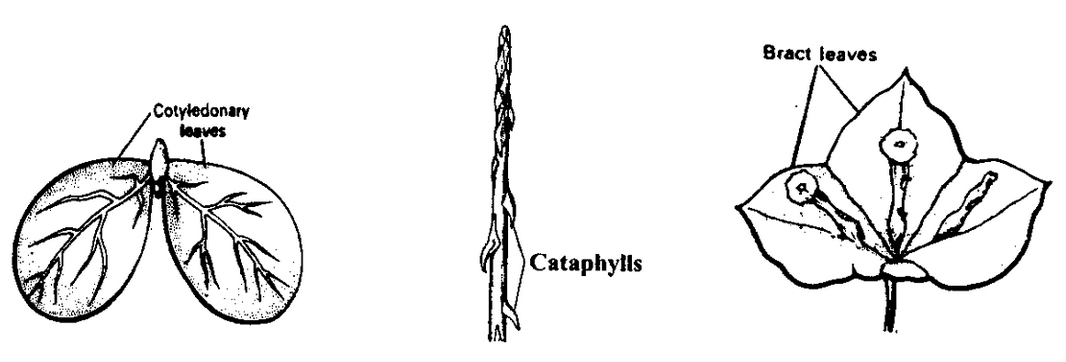
Cotyledonary leaves of RicinusCataphylls of AsparargusHypsophylls of Bougainvillea
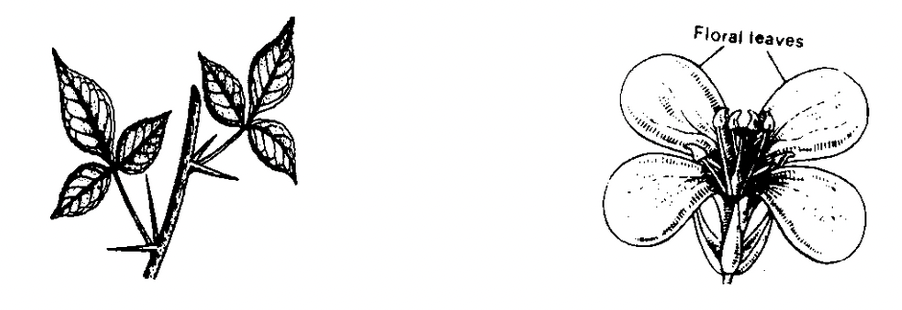
Prophylls of AegleFloral leaf
Fig. Types of leaves
PARTS OF A TYPICAL FOLIAGE LEAF
A typical foliage leaf has got three parts: Hypopodium or leaf base, Mesopodium or petiole, Epipodium or leaf lamina or blade
Leaf base (Hypopodium)
- It is the point of attachment of the leaf to the stem. It is a prolongation of the tissue of the stem. There are following types of leaf bases:
- Pulvinous: The swollen leaf base is known as pulvinous. Its attachment on the stem is weak and hence leaves with such leaf bases can be plucked easily e.g., mango, pea, gram, beans, shy plant, banyan tree, gulmohar, etc.
- Sheathing: In most monocots and in a few dicots the leaf base commonly expands into a sheath. The sheathing leaf base may clasp and surround the stem completely, called amplexicaul (e.g., grasses, Polygonum) or incompletely, called semi-amplexicaul (e.g., coriander, palms, buttercup, etc.). The sheathing leaf base of grasses possess a small leaf-like outgrowth called ligule just below the lamina. The leaf with ligule is called as ligulate.
- In banana sheathing leaf bases form a pseudostem or false stem while the actual stem is below the ground.
- The leaf-base frequently bears a pair of lateral appendages called stipules. A leaf with stipules is called stipulate and that without stipules is called exstipulate.
Petiole (Mesopodium)
It is the stalk of the leaf. It connects the lamina with the branch or stem. Its upper portion continues in the lamina forming midrib or costa while lower portion forms the leaf base. When the petiole is absent, the leaf is said to be sessile (e.g., wheat, rice, Calotropis, Gloriosa, etc.) and when present, it is said to be petiolate or stalked (e.g., mango, peepal. guava, cotton, China rose, etc.). When the petiole is short, the leaf is called subsessile. A long petiole raises lamina high to get more light and air. Commonly the petiole is cylindrical with a long groove on upper surface. The petiole is swollen in Eichhornia and winged in Citrus.
Lamina (Epipodium)
|
Fig. Parts of a typical leaf |
STIPULES
- Stipules are small, green, lateral appendages borne behind the leaf at its base. Their function is to protect young leaves and to manufacture food. While they are very common in dicots, they are rather rare among the monocots.
Types of stipules
According to longevity (duration), stipules may be of three types:
- Caducous: Such stipules fall down before the leaf unfolds, e.g., Michelia champaca, Dipterocarpus scabes, etc.
- Deciduous: Such stipules fall down just after the leaf unfolds, e.g., Cassia tora, Dillenia indica, etc.
- Persistent: Such stipules remain attached throughout life, e.g., rose, China rose, pea. etc.
According to their structure and location, stipules may be of following types:
- Free lateral: These stipules are of the simplest type. These are two, small, green, soft, filiform stipules borne on both sides of the leaf base, e.g.. China rose, cotton. etc.
- Adnate: These are two lateral stipules attached to the petiole with their posterior part so that the base of petiole appears to be winged, e.g., rose, groundnut, strawberry, etc.
- Interpetiolar: These are the two stipules that lie between the petioles of opposite leaves, e.g., Ixora, Anthocephalus, Hamelia, Vangueria, etc.
- Ochreate: Here two margins of two stipules unite to form a tube like structure encircling the internode to a certain height. The tubular covering is called ochrea, e.g., Polygonum, Rumex, Fagopyrum, Astragalus, etc.
- Scaly: These are two small, dry scales borne on two sides of the leaf-base, e.g. Indian telegraph plant (Desmodium gyrans).
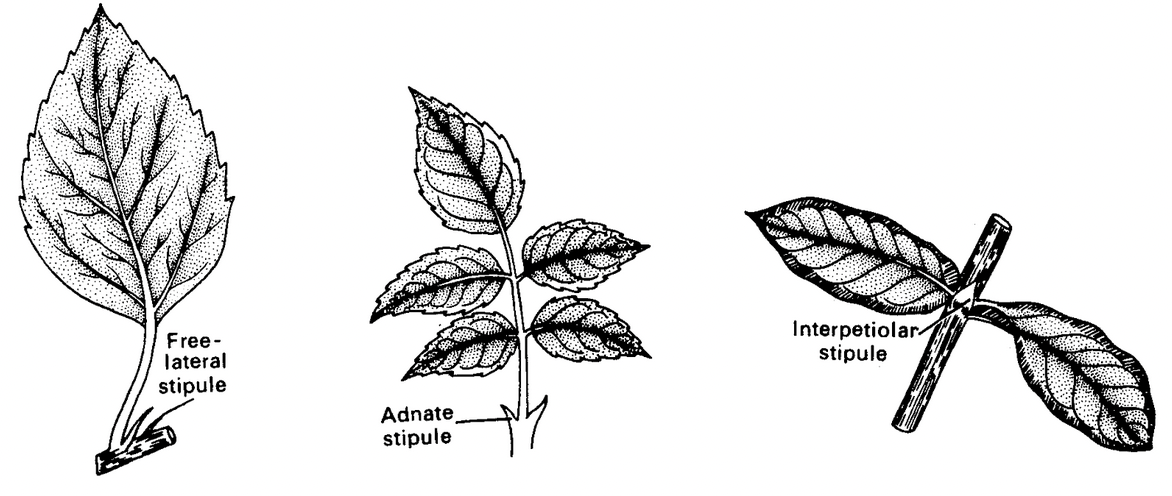
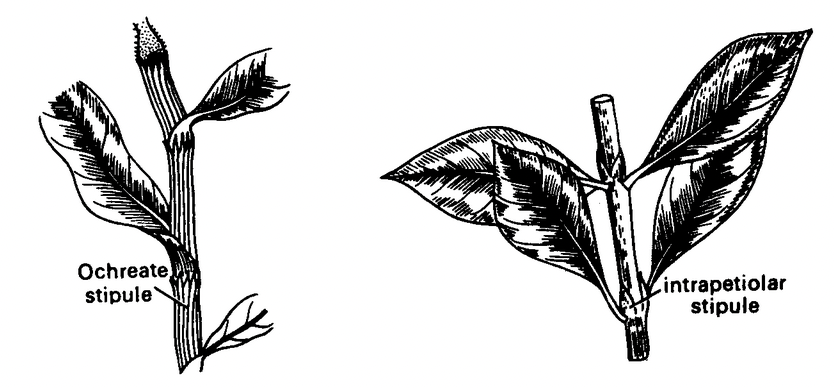
Fig. Types of stipules
Except free lateral stipules, all are modified because of adhesion or cohesion.
modifications of stipules
To carry on special functions, stipules are modified into following types:
- Foliaceous: Here stipules are modified into large leafy green structures performing all the functions of foliage leaves, e.g., pea, sweat pea, wild pea, Passiflora, Cassia.
- Tendrillar: Here stipules get modified into thin, thread like, coiled structures meant for climbing up, e.g., Smilax.
- Spiny: When stipules become modified into two sharp pointed structures, they are called spiny. Such spinous stipules serve as defensive structures, which may be long e.g. Acacia or curved e.g., Zizyphus, Mimosa, Capparis, Aegle, etc.
- Convolute or bud-scale: They are scaly stipules which enclose and protect the leaf-buds. They fall off as soon as leaves unfold, e.g., Ficus, Artocarpus, Magnolia, Mesua, etc.
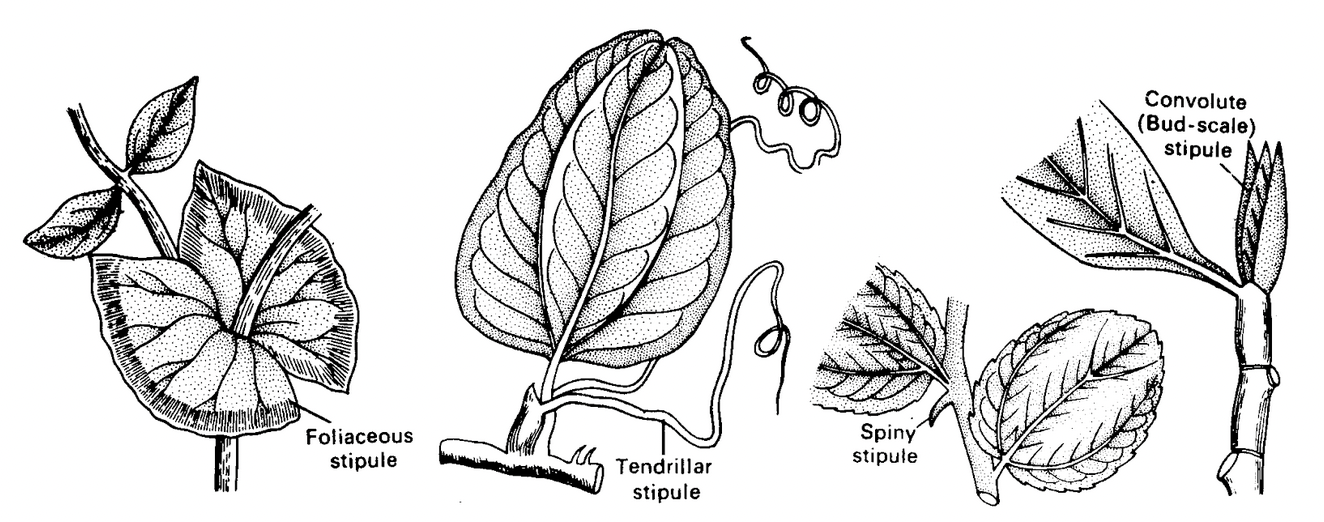
Fig. Types of modified stipules
STIPEL
|
Fig. Stipel |
VENATION
- Veins arise from the mid rib and transverse the leaf lamina in different directions. From each vein many veinlets arise. Veins and veinlets are not only mechanically and physiologically important but also taxonomically significant. The arrangement of veins and veinlets in the lamina is known as venation.
Types of venation
There are two main types of venation: reticulate and parallel.
- Reticulate venation: In this type, veins and veinlets arrange to form a reticulum or network. It is a characteristic of dicot leaves, except Calophyllum, Corymbium and Eryngium. On the basis of number of mid ribs, it is of two types:
-
Unicostate or pinnate: In this type, there is only one mid rib or costa that gives out many lateral veins which run towards margin or apex of leaf, e.g., mango, banyan, guava, etc.
-
Multicostate or palmate: In this type, there are number of more or less equally strong ribs arising from the tip of the petiole which run outwards or upwards. It may be of two types:
-
Convergent: All the mid ribs converge towards the tip of the lamina, e.g., Indian plum (Zizyphus jujuba), bay leaf (Cinnamomum tamala), etc.
-
Divergent: All the mid ribs diverge towards the margin of lamina, e.g., castor, China rose, cucumber, grape vine, etc.
- Parallel venation: In this type all veins run parallel to each other. Transverse veinlets are unbranched and are parallel to one another. It is the characteristic feature of monocots, except Smilax, Dioscorea and some aroids. It is also of two types:
-
Unicostate or pinnate: In this type, there is a single mid rib that gives out many lateral veins which run towards the margins or apex of the leaf e.g., banana, ginger, Canna, etc.
-
Multicostate or palmate: In this type, there are a number of mid ribs which run upwards or outwards. It is of two types:
- Convergent: Mid ribs converge at the apex, e.g. grasses, bamboo, maize, wheat, etc.
- Divergent: Mid ribs diverge towards the margin of lamina, e.g., fan palm (Borassus flabellifer).

Fig. Venation in leaves
LEAF INCISION
On the basis of incision of lamina, leaves are grouped into two categories, simple and compound.
Simple leaf: A leaf is said to be simple when it has a single lamina which is either entire or incised, but the incisions do not reach upto the mid rib or petiole, e.g., mango, guava, banyan, papaya, etc.
On the basis of the direction of incision, the simple leaf with incised leaf margins may be of two types:
-
Pinnate simple leaf : Incisions point towards the different points of mid rib, e.g., radish.
-
Palmate simple leaf : Incisions point towards the base of mid rib, e.g., castor.
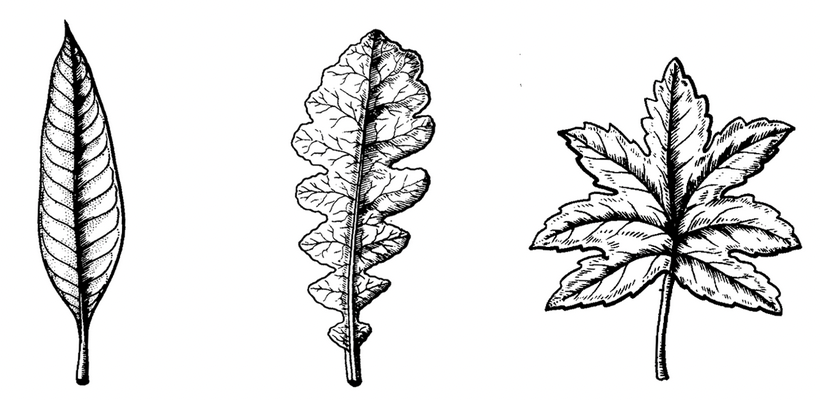
Entire PinnatePinnatePalmate pinnate
Fig. Simple leaves
Compound leaf: If incisions in the margins of lamina reach up to the mid rib, it gets segmented into small pieces, each piece being called a leaflet or pinna and the entire leaf is called a compound leaf. The mid rib of a simple leaf becomes an axis bearing leaflets, called rachis in a compound leaf.
Types of compound leaf
On the basis of mode of lamina incisions reaching upto mid rib or petiole, compound leaves are of two types: pinnate and palmate.
- Pinnate compound Leaf: In this type, incisions reach up to different points of the mib-rib. Leaflets get arranged laterally in opposite manner along the rachis. It may be of following types:
- Unipinnate: Leaflets are borne directly on rachis. It is of two types:
- Paripinnate: Leaflets are borne in pairs i.e., even number of leaflets, e.g., tamarind (Tamarindus indicus), amaltas (Cassia fistula), rati (Abrus precatorius), etc.
- Imparipinnate: The rachis is terminated by an unpaired odd leaflet, e.g., rose (Rosa indica), neem (Azadirachta indica), Chinese box (Murraya exotica), Clitoria, Melia, etc.
- Bipinnate: The pinnae are dissected again into pinnules so that they are borne now on secondary axes known as rachillae or rachules, e.g.. Acacia, Mimosa, Albizzia, Caesalpinia, etc.
-
Tripinnate: Here pinnules are borne on tertiary axes, e.g., drumstick (Moringa pterigosperma), arlu (Oroxylum), etc.
-
Decompound: Here division of rachis occurs more than three times. The rachis and its branches become flattened while the pinnules are largely suppressed, e.g., coriander, carrot, fennel, etc.
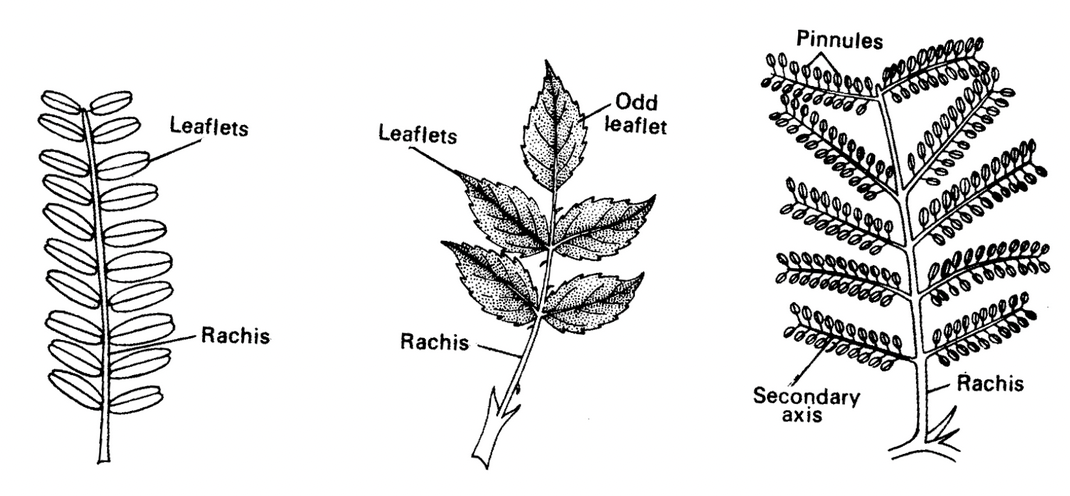
-
Unipinnate paripinnateUnipinnate imparipinnateBipinnate

Fig. Types of pinnate compound leaves
Palmate compound leaf: In this type, incisions of lamina reach upto the base of mid rib. The rachis does not develop at all. The petiole bears leaflets in this type. Depending upon the number of the leaflets present, a palmate compound leaf may be:
-
Unifoliate: Only a single leaflet is articulated to the top of the winged petiole. The articulation shows that the leaf is not a simple one but compound, e.g., Citrus sp.
-
Bifoliate: The petiole bears two leaflets, e.g., Balanites roxburghii, Hardwickia pinnata, Bignonia grandiflora, etc.
-
Trifoliate: The petiole bears three leaflets, e.g., Aegle marmelos, Hydrocotyl, Trifolium, Desmodium, etc.
-
Quadrifoliate: Four leaflets are present at the apex of petiole, e.g., Paris quadrifolia, Marsilea quadrifoliata (a pteridophyte).
-
Pentafoliate: Five leaflets are present at the apex of petiole, e.g., hurhur (Gynandropsis pentaphylla).
-
Multifoliate: More than five leaflets are present at the apex of petiole, e.g., Bombax malabarica, Cleome viscosa, etc.
|
|
MODIFICATIONS OF LEAVES
To perform functions other than normal, leaves get modified into following types:
- Leaf spines: Spines are small, thin and pointed structures meant for protection and to reduce the rate of transpiration. A part of leaf or entire leaf may modify into spines, e.g., leaf apex in Phoenix and Yucca, leaf margin in Argemone. apex as well as margin in Aloe, entire leaf in Opuntia, Berberis, Ulex, etc.
|
AloeArgemone Opuntia Berberis Ulex Fig. Leaf spines |
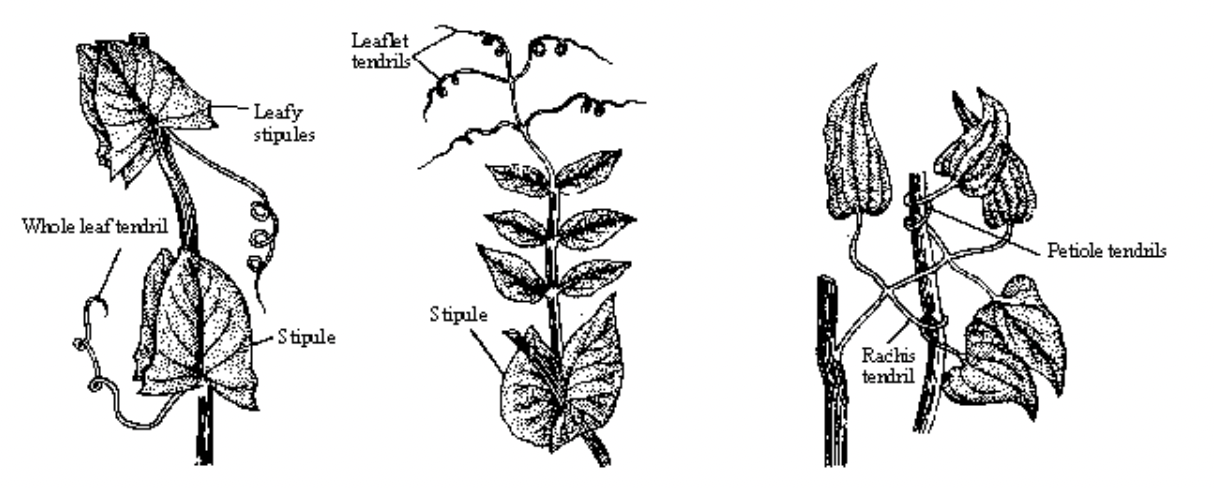
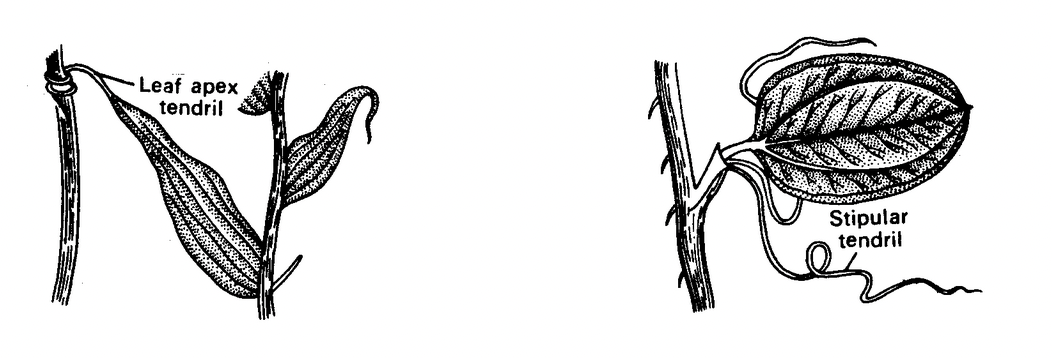
Leaf tip tendrils of Stipular tendrils of
Gloriosa Smilax
Fig. Modifications of leaf tendrils
|
Leaf tendrils: Tendrils are thin, thread like coiled structures meant for climbing. The parts of leaf which get modified into tendrils are: entire leaf-wild pea (Lathyrus aphaca) upper leaflets-pea (Pisum sativum), sweet pea (Lathyrus odoratus); tip of rachis-lentil (Lens culinaris); petiole-virgin’s bower (Clematis); leaf tip-glory lily (Gloriosa superba); stipule-smilax. |
Fig. Leaflet hooks of Bignonia |
- Scale leaves: These are thin, dry, membranous structures which protect axillary buds. When they store food materials, they become thick and fleshy (e.g., onion). Scale leaves are common on underground stems, saprophytes, parasites, Ficus, Artocarpus, Casuarina (Jhau), Tamarix (Banjhau), etc.
- Leaf hooks: In Bignonia unguis cati, three terminal leaflets are modified into sharp, pointed and curved hooks which help the plant in climbing. In Asparagus, leaves on main stem get modified into hooks.
- Phyllode: The part of leaf which is not leafy is modified into a leafy structure, is called phyllode. In Australian Acacia, petiole is modified into phyllode. In Jerusalem thorn (Parkinsonia aculeata), the secondary rachis is modified into phyllode.
- Pitcher: In pitcher plant Nepenthes the lamina of leaf is modified into a pot like structure called pitcher. The petiole is modified into tendril while the leaf apex forms the lid. Pitcher contains water and digestive juice. When insects enter the pitcher, digestive juice digests them.
- But the pitcher of Dischidia rafflesiana is non-insectivorous and without lid. Water is stored inside the pitcher and is then absorbed by adventitious roots (nest roots).
- Bladder: In some aquatic plants like bladderwort (Utricularia), the leaf is very much segmented. Some of these segments get modified into sac like structures called bladders. They have trap-door entrance which allows aquatic insects to pass in but never to come out.
- Succulent leaves : These are fleshy or swollen leaves which store water, mucilage or food materials. Mostly present in saline or xerophytic habitats e.g., Aloe, Agave, Bryophyllum, Portulaca.
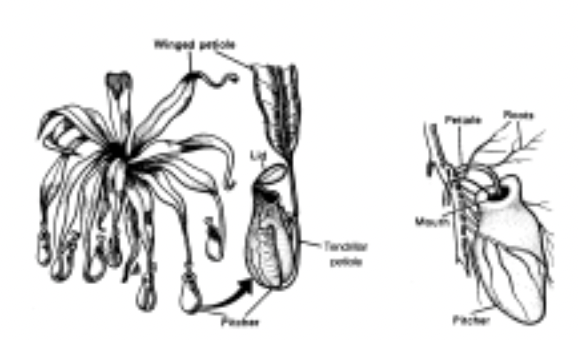
Nepenthes Dischidia
Fig. Pitcher shaped leaf
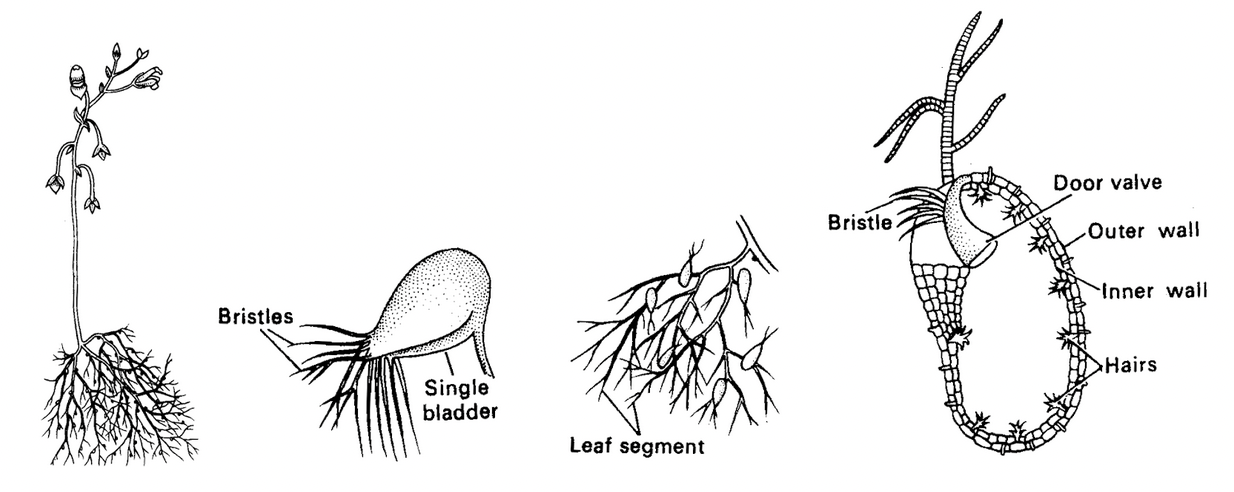
Fig. Types of palmate compound leaves

